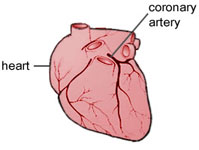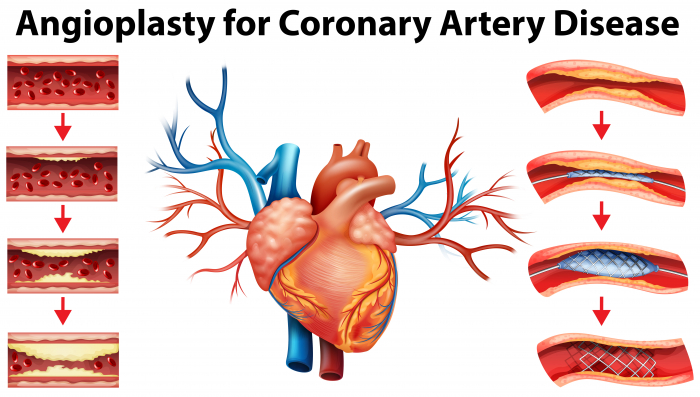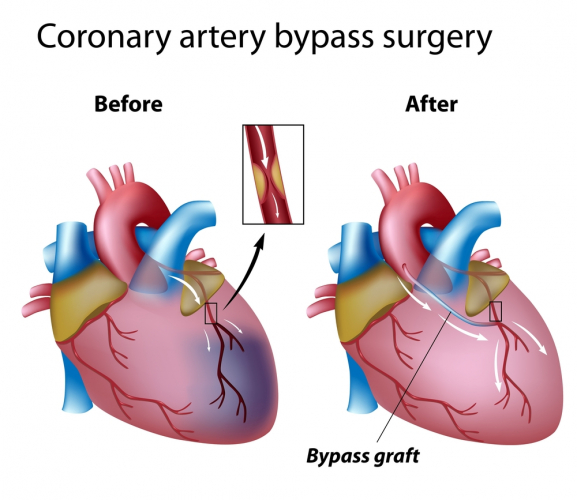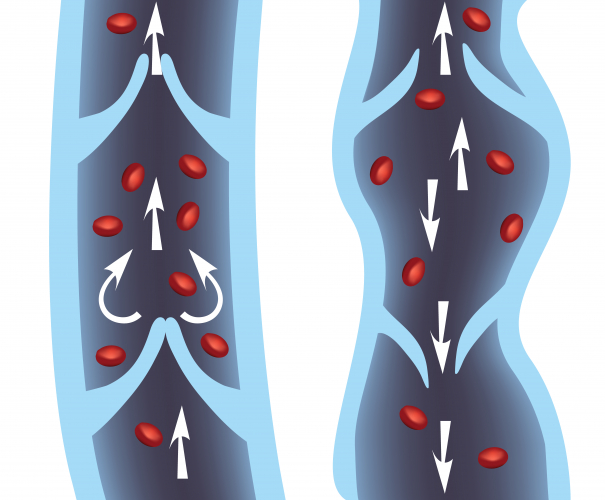Coronary heart disease (CHD) is one of the major causes of death in the UK.
CHD is caused by fatty material building up inside the arteries supplying the heart. Over time, this reduces the blood flow through the arteries, resulting in the heart muscles becoming deprived of oxygen. The heart needs glucose and oxygen to respire. Through respiration, energy is released which is used to contract the heart muscle, allowing blood to be pumped around the body. Without glucose and oxygen, heart cells might eventually die, possibly leading to a heart attack.

There are many possible factors that can lead to CHD, such as a poor diet that is high in 'bad' fat, stress and smoking which increases blood pressure. Often, certain lifestyle changes can be made in order to lower the risk of getting CHD.
For someone with CHD, there are several forms of treatment available. Let's look at this further below.
Statins

Statins are a group of medicines that work to lower the level of cholesterol in your blood. Too much cholesterol in your blood can lead to fatty deposits building up in your arteries.
Advantages
Taking statins is a relatively easy way to lower cholesterol.
Disadvantages:
Statins can lead to unwanted side effects such as headaches, muscular pain and nausea.
Statins have to be taken on a long-term basis.
Stents
A stent is a small mesh tube that is used to widen arteries that are narrowed, blocked or weakened. The collapsed stent is put into the artery with a balloon inside it. The balloon is then inflated and the stent increases in size so that the blood flow through the artery is increased.

Advantages:
The success rate is high.
Stents lower the risk of a heart attack.
They last for a long time.
Disadvantages:
There can be complications like bleeding, irregular heartbeat or infection.
Arteries sometimes reclose.
Drugs need to be taken to stop the blood from clotting.
Coronary artery bypass
Coronary artery bypass is a surgical procedure that can be used to treat CHD. Often, the procedures mentioned above would be tried first before resorting to bypass surgery.

In a coronary artery bypass, blood is diverted around the blocked arteries, so the rest of the heart gets a good supply of oxygen. Often, a blood vessel from another part of the body is attached near to the blocked artery supplying the heart. Having a bypass might reduce the chances of having a heart attack.
Advantages:
The improvement of symptoms such as chest pain or breathlessness.
Disadvantages:
There is a risk of complications during surgery.
Heart Valve Disease
Veins have valves to stop the blood flowing in the wrong direction, so that the blood flows in the correct direction in the heart. If the valve doesn't close properly, blood will move back into the heart. This can put great strain on the heart as it then has to work harder to pump the much-needed blood around the body. Sufferers may feel unusually tired and constantly out of breath.

Some people might be born with heart valve disease, while others might have it as a side effect of a heart attack. The faulty valves can be replaced with mechanical valves made from man-made material such as metal, or biological valves which are made from human or animal tissue.
Advantages:
The success rate is high - they can prolong patients' lives.
The new valve can last up to 20 years.
Disadvantages:
It might be necessary to have blood thinners to stop clotting.
There is always a risk of serious complications with surgery.
Heart failure
Heart failure is a serious condition that tends to get worse over time and can lead to death. It's often the result of many different problems affecting the heart, like those mentioned above. The heart often becomes very weak and can no longer pump blood around the body. In these cases, a donor heart can be transplanted. This means that a healthy heart from a person who's recently died will replace the patient's damaged heart.
Artificial hearts have been used temporarily to keep people alive while they wait for a heart transplant. The artificial heart is not living, so needs a power source - early power sources were so large that the patient had to stay in hospital. New advances mean that the patient can now use a portable power supply and can go home.
Advantages:
The artificial heart is not rejected by the body.
It keeps the patient alive while waiting for a transplant.
Disadvantages
Surgery can lead to bleeding and infection.
Blood does not flow as easily and can lead to clots, so blood thinners need to be taken.
Parts of the heart can wear out or stop working.
In the following activity, you will describe coronary heart disease and how it can be treated.








